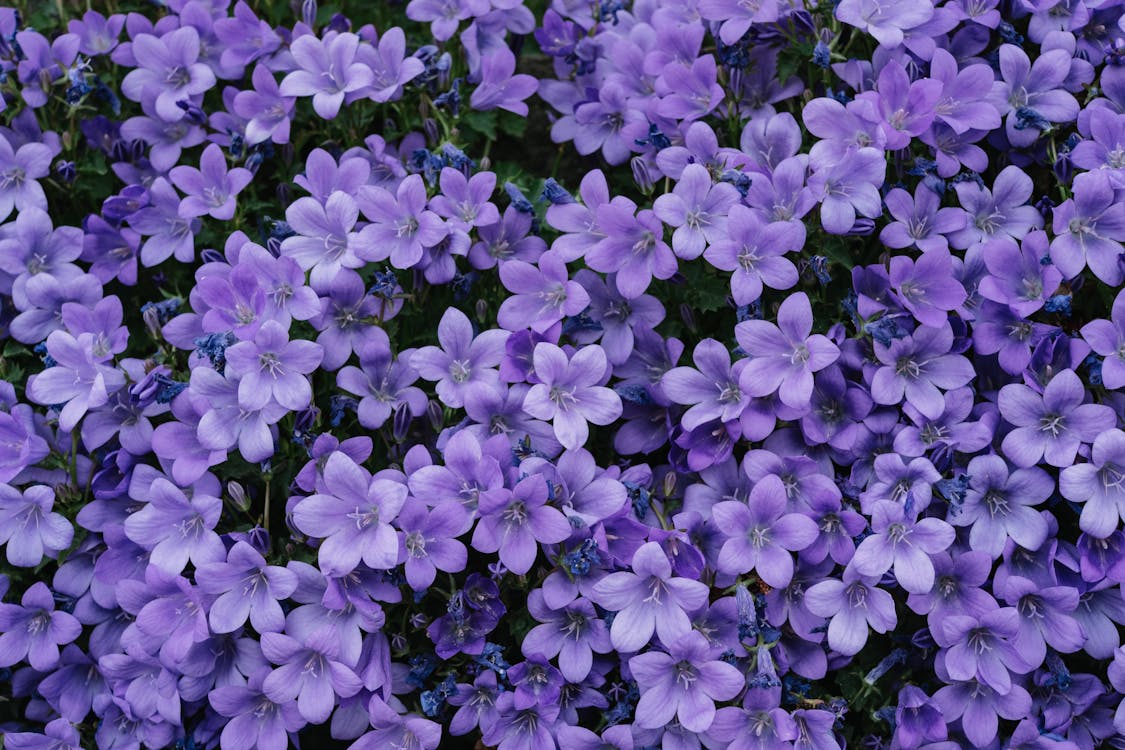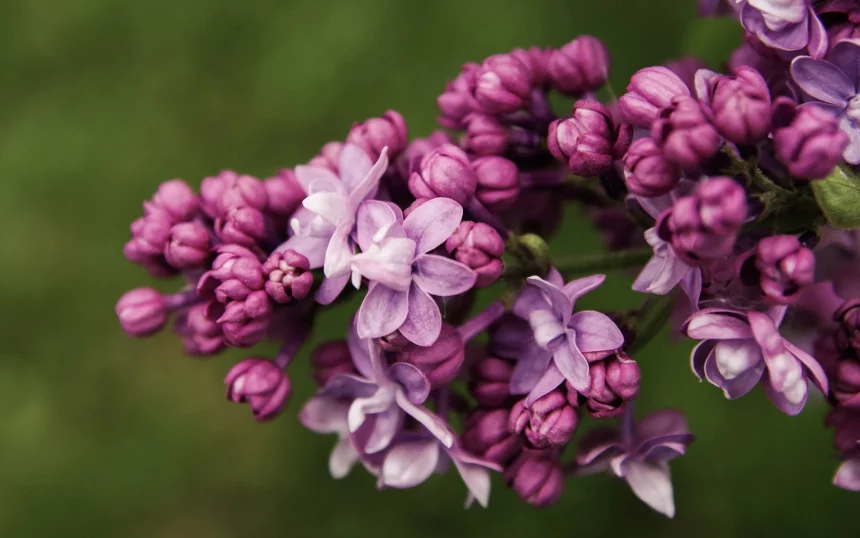Choosing the Right Perennial for Spring
While it might seem like Winter is too early and too cold to be thinking about Spring planting, planning your garden in the Winter is the best time to do so! Planning your garden can be hard work and time consuming, so it’s always good to find ways to keep things as easy as possible, hence, perennials are a great solution to making sure your yard pops come Spring.
With flora, there are two main groups of plants to consider: annuals and perennials. While annuals can be planted quickly and provide instant appeal for your yard for the Spring and Summer, they live, and die, and never return (unless you plant new ones). Perennials, on the other hand, when planted and cared for properly, will return to your yard every year like clockwork. This makes Perennials a great budget-minded choice, both saving you time and money.
Below are a few recommendations on some of the most hardy, popular perennials for the North and Midwestern regions of the US. That being said, it’s always a good to check to check their USDA Hardiness zone, so they will survive winters in your region. Also, plant perennials where they’ll get the correct amount of sunlight: Full sun means 6 or more hours per day, while part sun is about half that. Shade means no direct sunlight. You can plant perennials pretty much any time of year, as long as you keep them watered while they get established.

Below is a list of some of the best and most accessible perennials for a Northern or Midwestern climate. They will bloom as early as the beginning of April and last well into June. If you wish to branch out from this list and discover more, keep in mind a few things when choosing your Spring perennials:
- Plants that can withstand winter temps often can withstand and require more sun than others. Keep this in mind when deciding where to place your Perennials.
- Consider the type of soil you have before picking certain shrubs. Some plants require well-drained soil, whereas others can thrive in soil with clay and so on. You will have constant headaches if you pick a plant that is not suited for the type of soil you have.
- The first year of Perennial blooms can often be misaligned, so do not fear if your plants do not bloom at the exact time you expect them to. Most Perennials require a year after planting to fall into a rhythm
12 Common Perennials with Spring Blooms
Lilac

Everyone knows and loves the purple and violet vibes of the Lilac plant. Lilacs are iconic Spring perennials which bear a wonderful fragrance that is synonymous with Spring. Lilac grows in plentiful, big blooming clusters that can be snipped and collected and brought indoors to Spring that lovely scent of spring into your home.
Lilacs need lots of sun to survive, and can be pretty drought-resistant as well.
Ninebark

Ninebark is a very hardy and strong ornamental shrub that blooms into nice whites, reds, and yellows. It’s native to the Midwest and Northern zones. Ninebark can grow in full sun, and acts as a great plant for local interest, providing pollen for bees, butterflies, and so on.
Aronia (Chokeberry)

Spring blooms are a boon to your local wildlife; especially bees. Aronia is a common and hardy plant that thrives in pretty much any condition, from wet to dry, rich to ragged soil, good drainage and bad drainage, as well as in the sun or partly shaded.
Also known as Chokeberry bushes, Aronia is a low-to-the-ground shrub that produces bitter, black fruits that look almost like blueberries, in the fall. While edible, these berries are true to their name and might cause you to choke, so it’s best to let your local wildlife consume them instead.
Brunnera

The color blue is one of the rarest in the plant world, so it is always a good idea to throw some into your garden wherever possible. Enter, the Brunnera plant, a bearer of tiny, early-blooming clusters of blossoms that will keep their color for quite a while.
Bleeding Heart

This perennial bears beautiful, uncanny lengths of pink blossoms that resemble their namesake to a T. This classic spring blooming Perennial thrives best in the shade, and is a perfect pairing to the Brunnera listed above. Over time, this perennial matures into a quite the large assembly of green foliage and flowers. Bumblebees will flock to your garden for this delightful plant, while other animals will typically leave it be.
Variegated Solomon’s Seal

Next we have Solomon’s Seal, a surprisingly unknown perennial to most that blooms in early Spring. Solomon’s Seal are low-maintainence, and provide excellent ground cover that spreads quickly. These white blossoms extend all the way up the plants stem and bloom just wide enough to provide access to your local pollinators. This plant is an excellent companion to the two bloom flowers listed above, Brunnera and Bleeding Heart.
Lungwort

Lungwort, the prettiest plant with an ugly name, provides vivid pink, blue, and purple blooms that can be depended on to bloom in early Spring like clockwork. These small clusters of flowers are another great source of food for early pollinators in the Spring season. Once the blooms have faded, the plant will remain a deep green in its leaves pairing greatly with your garden-variety hostas and ferns.
Creeping Phlox

Technically in the evergreen family, the creeping phlox starts the Spring excitement by covering your ground in pink, purple, blue, and white blossoms with bright green foliage. True to its name, Phlox can creep down surfaces, slopes, and walls to provide a dynamic and beautiful ground cover and decoration for your garden.
Salvia

Perennial salvias are and oldie but a goodie providing a palette of deep and vibrant purple that can flow and blend in with ornamental grasses and other blooming perennials to great a river of color. These plants are best grouped in clusters of three, so make sure if you choose this plant to plant enough to utilize it’s coverage properties.
Garden Peony

Peonies are as long lasting as they are beautiful, and have been cultivated over centuries to be one of the strongest, most long-last perennial you can put in your garden. Many favor these plants for their distinct bloom, but some shy away from them for the tendency to get bogged down with rain. This can be alleviated by supporting these plants with a ring that will keep them from drooping under their own weight.
Delphinium

Delphiniums are a nice variation to the last few suggestions, as they will sprout out of the ground tall and proud; up to six feet! While these bloom a little later in the spring depending on your hardiness zone, they tend to bloom a second time in the summer, as well! These are called “rebloomers” and are indicated as such on the label. Be warned: because of their height, it might be a good idea to support their bodies with a bamboo pole or similar support.
Catmint

Not to be confused with the mint-plant, Catnip, Catmint is a great border bloom that can accentuate any flower bed. They grow into tiny perwinkle blossoms pretty early into Spring. If trimmed properly, they can also rebloom, like the Delphinium, in late summer and early fall. These flowers also work great for local interest and are great for pollination with bees and butterflies.
How to Successfully Plant Spring Perennials
Now that you’ve decided on the Perennials for your yard, keep in mind these few tips in order to make sure your plants are blooming bright and fully within the year:
- Plant Placement –Shrubs and flowers tend to do better when planted and maintained in a flower bed or a separated area from your regular turf. Be mindful with your placement, and your arrangements will prosper and build together, rather than be islands of blooms in an unorganized mess.
- Water! – Freshly-planted perennials and shrubs love water, so be sure to keep the soil nice and moist. In a dry season, try to water them at least once a week to ensure they stay healthy and grow naturally.
- Mulch – Wherever you decide to place your shrubs and perennials, adding mulch around their bases will protect them from weeds and animals as well as lawnmowing and weed trimming.
Ultimately, your garden is an extension and expression of yourself. And if you find that you’re not blessed with a green thumb or the time and energy to plan your garden and get the fullest potential from it, you should consider the services of a Landscape Architect. These designers know the ins and outs of landscape design and can create a plan for your property that suits your needs, your budget, and your style. For more information about landscape architecture, and what Landscape Architectural can do for you, please check out our Homeowner’s page for more info. You can also schedule a 30-minute consultation for free!

